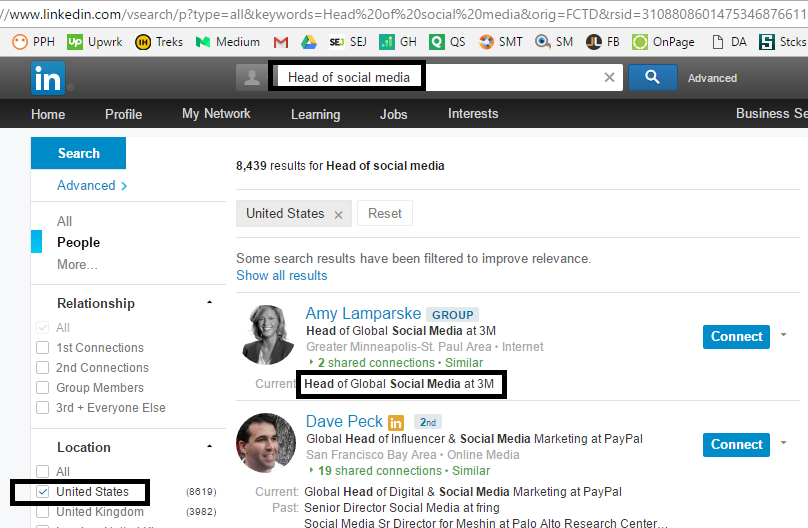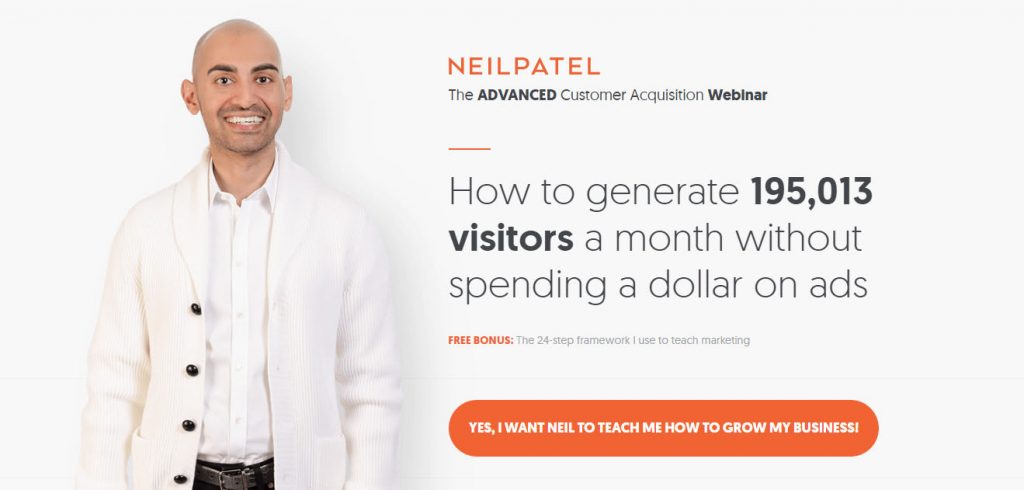3 Marketing Strategies For B2B SaaS Startups
Since the dawn of the internet, SaaS startups have evolved greatly. And so has their marketing. Before investing in software, companies are much more aware of the competition, research the internet more thoroughly and rely heavily on previous client reviews.
It turns out that the most successful B2B SaaS companies invest a lot in their marketing. An interesting graphic by Incredo explains this :

As a startup, you might consider the question of putting your money where it is worth. Should you hire a big growth hacking company or do it in-house? Well, there are a lot of things you can implement on your own.
Over the years, we’ve tested multiple marketing strategies with B2B SaaS companies and validated what actually works and what doesn’t!
In this post, we’d be talking about some concrete strategies that have worked almost every time for SaaS firms.
Let’s start with them.
#1 LinkedIn Lead Generation
Major Use: Generating leads and maintaining a pipeline.
Tools/Resources Needed: A premium LinkedIn account and internet research skills.
Level Of Implementation: Easy
As a B2B startup, you probably realise that your bread and butter is quality leads. Maintaining a flow of quality leads is what you need for growth.
As I have mentioned in multiple posts, LinkedIn is a great tool if you harness it’s power properly.
There is a simple 4 step formula when dealing with B2B lead generation on LinkedIn :
- Understand who the decision maker is (the one who will give the approval of your SaaS at their firm).
- Use LinkedIn’s advanced search to narrow down their profiles and send them a connect request.
- Start a conversation with them by starting to talk about things they care about.
- Pitch them with a soft sell including an introduction to your product and an invitation for a chat.
And then, on the sales call, leave them spellbound with your awesome tool 🙂
Let’s go through this with an example. Say, you own a social media analytics tool that lets enterprises understand customer sentiments and engagements better. In this case, you are talking about decision makers who understand
- The technical need of your product and
- Have the authority to buy your product for their company.
That would mean people who are heading social media. Here’s how I would search for them :

The next step is to send a connect request to them with a personalised message. This would increase your chances of getting an approval for that connect request.
Once connected, you shouldn’t pitch people directly on LinkedIn.
Why do you ask?
Because then there is no difference between you and a cold caller who just got a contact detail.
Marketing is all about building relationships. Take the time to read the content that your contact shares, the kind of groups they follow, the type of people they are connected with etc.
Once you get an understanding, try interacting with them by :
- Commenting genuinely on what they share on LinkedIn.
- Reading their blog posts and asking/giving something valuable in return.
- Dropping a private message complimenting their work in a specific area.
This would help break the ice and nurture a real relationship.
Once you’ve reached a certain level of comfort, pitch with a soft sell.
Don’t write an essay telling how your product is the best in the world.
All you need to mention is
- What your product does (not more than 2-3 lines)?
- Which of your lead’s competitors is already using them?
- Which area of your lead’s company would your product provide real value for?
- A call to action suggesting a short 10-minute chat.
That’s it. That’s all you need to maintain a healthy pipeline while building strong B2B relationships.
Want to take your business to the next level? Enroll for free growth hacking course and become an expert growth marketer. Enroll Now!

Secret Tip :
We’ve been doing this for multiple clients (here are some cases) and have achieved terrific success!
Here are some numbers that will help you channelise your time and efforts around this
Number of connect requests to be sent in a week: 200
Number of hours to be invested: 10
Number of accepted requests: 60-80
Number of warm leads/ week: 4-6
2. PPC Ads + Re-marketing
A lot of people believe that ads do well only for
- B2C products.
- Brand awareness.
Well, to tell you the truth, that’s not the case. You can use advertising smartly to generate leads too.
Before going further, let me explain the two terms mentioned above
- PPC ads: Pay per click ads. Some examples are Google text ads and Facebook ads in your news feed.
- Re-marketing: Re-marketing/Re-targeting is the process of showing targeted ads to people who left your site/app at a certain stage. In other words, people who came to your platform but didn’t take a desirable action.
As I was saying you need to use ads smartly with SaaS products. For that, you must understand the customer journey.
SaaS marketing is not direct marketing. You don’t sell on the spot.
Your SaaS customer is probably a business owner/executive who knows how to deal with tools and services. They know how to research a business like yours, gauge your reputation and make an informed decision.
The SaaS/B2B marketing funnel works in the following way:

You need to make sure that you understand this journey and address all their needs at all levels.
Let’s come back to our example of the social media analytics tool.
Here is the funnel I would build using PPC ads and remarketing:
Generating Awareness: Run targeted PPC ads where people are looking for a social media analytics tool. I would use the Google Keyword Planner to understand what people are searching for.
Convincing With Content: Get them on a landing page which talks extensively about what the product does, why they should choose you, what other clients are saying and a pricing comparison with other tools. It goes without saying that the page would have called to action buttons inviting people for a demo.
Putting A Hook: This is the part which I love. Right when the user is about to exit the page, show a convincing popup that gives a valuable resource in lieu of their contact information. This loops in your audience really well. In this case, you should consider giving away a free eBook on social media analytics or an important industry report.
Neil Patel, who runs two million dollar SaaS companies does this the best with his unique content forms.

Retarget Your Audience: Once you’ve put a hook onto your users, use targeted remarketing via Google and Facebook to reach out to your audience talking about product demos, more eBooks, visual client reviews and more.
3. Inbound Marketing:
We’ve mentioned a bit about the B2B marketing funnel in the above point. Over here, we will club it with inbound marketing and show you how to generate leads organically.
Inbound marketing is the process of generating traffic/leads organically to achieve a scalable & cost-effective business funnel.
The funnel by Hubspot sums the inbound journey perfectly :

Let’s continue with our example of the social media analytics company.
As a Saas company, you should be taking care of these steps in the following fashion :
- Attracting visitors: Your customers are looking for social media analytics help. Posting valuable content about the same is something you can do. This content can be set up in different forms including blog posts (how to guides are best), infographics, video tutorials, webinars and podcasts. This would attract more people to your platform as you are offering something of value.
- Converting visitors into leads: Don’t mix conversions with paying customers. Here we are talking about strangers on your website turning into leads. The best way is to offer a tempting call to actions like demo invites, eBook downloads, industry reports and forms.
- Leads to customers: Once you have a pipeline of leads, you need to make sure that they are nurtured properly to convert them into paid customers. Some effective strategies include email flows after someone has completed the demo stage, remarketing advertising as discussed above, integration with CRM’s which would make follow-ups easier for your sales team and lead scoring.
Want to know more about how to acquire new customers? We’ve compiled 10 B2B and B2C customer acquisition strategies in a free book. Get your copy today!
In A Nutshell
To sum up the post, I would stress the fact that understanding your customer journey is the most important thing.
If you are selling a $10 tool to a small business owner and if you are selling a $2000 software to an enterprise, the customer journeys would be quite different.
Understanding how customers discover you, evaluate your product, research the competition and make a final decision is crucial.
The correct use of digital marketing at all these levels can help you increase your traffic and eventually, conversions!





Write a Comment